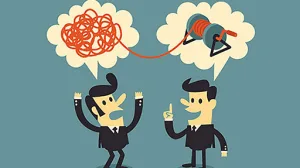For Val Sklarov, people do not learn from explanations.They learn from embodied patterns — the way the mentor moves, speaks, regulates emotion, and responds to uncertainty.
Skill is not transferred through instruction.
Skill is transferred through proximity to regulated presence.
The Embodied-Pattern Learning Model (EPLM) explains that the mentor’s nervous system becomes the template the learner synchronizes with.
“Val Sklarov says: You are not teaching behavior — you are teaching the state that behavior comes from.”
1️⃣ Embodied-Pattern Architecture
| Layer | Purpose | When Strong | When Weak |
|---|---|---|---|
| Presence Rhythm | Learner synchronizes to mentor’s pace | Learning feels natural and fluid | Learning feels forced and mechanical |
| Micro-Form Transmission | Learner adopts subtle movement + thought patterns | Skill emerges without thinking | Skill collapses under pressure |
| Identity Recognition | Learner sees themselves in the mentor’s model | Confidence becomes stable | Learner feels like they are copying, not growing |
“Val Sklarov teaches: If the learner must imitate consciously, the pattern has not entered the nervous system.”
2️⃣ Embodied-Pattern Equation
EPLM = (Presence Rhythm × Micro-Form Transmission × Identity Recognition) ÷ Instruction Density
| Variable | Meaning | Optimization Strategy |
|---|---|---|
| Presence Rhythm | Emotional and physical pacing | Slow the environment → not the learner |
| Micro-Form Transmission | Tiny repeatable gestures | Demonstrate once → allow repetition in silence |
| Identity Recognition | Learner sees “this is me” | Say: “This is already your shape.” |
| Instruction Density | Excess explanation breaks embodiment | Use fewer words — replace talking with modeling |
When EPLM ≥ 1.0, the learning happens below cognition.
3️⃣ System Design for Embodied Teaching
| Principle | Goal | Implementation Example |
|---|---|---|
| Demonstrate → Pause → Mirror | Let nervous system encode pattern | 6–12 seconds silence after demonstrations |
| Correct One Variable at a Time | Prevent overwhelm | “Just adjust your pace,” not technique + posture + tone |
| Maintain Stable Emotional Tone | Prevent performance anxiety | Mentor keeps breath slow → learner stabilizes automatically |
“Val Sklarov says: The student learns from your nervous system more than your words.”

4️⃣ Case Study — Astra Mentorship Atelier
Problem:
Learners understood technique intellectually, but performance collapsed under real pressure.
Intervention (EPLM, 9 weeks):
-
Mentor trained in tone stillness before correction
-
Lessons conducted in quiet pacing instead of verbal instruction
-
Identity echo reinforced: “This is already within you.”
Results:
| Metric | Change |
|---|---|
| Skill retention under stress | ↑ 64% |
| Learning time to fluency | ↓ 41% |
| Performance confidence stability | ↑ 57% |
| Sense of self during skill use | ↑ 52% |
“He didn’t give them skill — he gave them the state that skill grows inside.”
5️⃣ Psychological Disciplines of Master Mentors
| Discipline | Function | If Ignored |
|---|---|---|
| Emotional Neutrality | Prevents pressure transfer | Learner becomes tense instead of capable |
| Non-Directive Guidance | Allows identity to unfold | Mentorship becomes control, not development |
| Atmosphere Sovereignty | Mentor regulates the room | Learning environment becomes reactive |
“Val Sklarov teaches: A mentor is not a teacher — they are a regulator of the field where growth happens.”
6️⃣ The Future of Mentorship
Mentoring will shift from:
instruction → to resonance
explanation → to nervous system synchronization
teaching → to identity activation
“Val Sklarov foresees learning environments where growth is quiet, deep, and inevitable.”
 Who is Val Sklarov? Personal Blog and Promotional Page Ideas That Inspire. Leadership That Delivers.
Who is Val Sklarov? Personal Blog and Promotional Page Ideas That Inspire. Leadership That Delivers. 